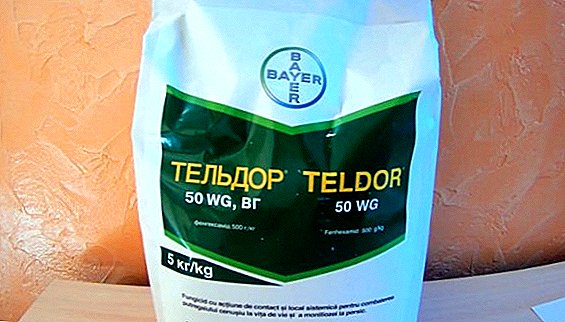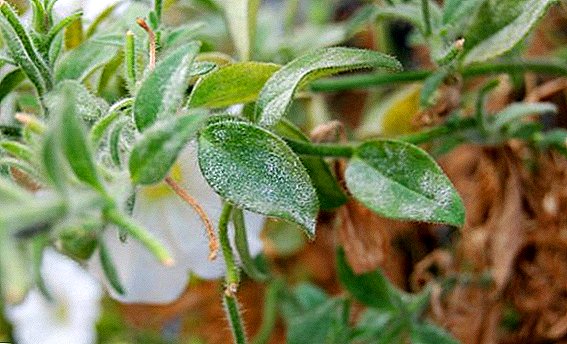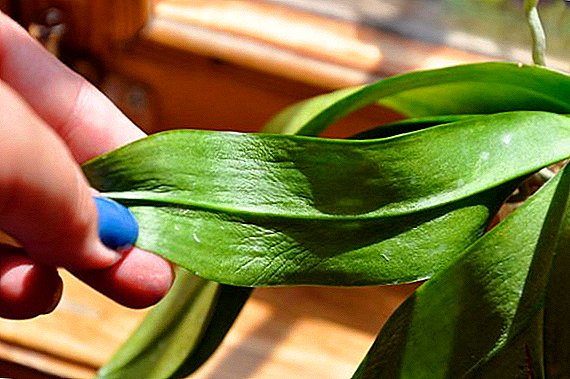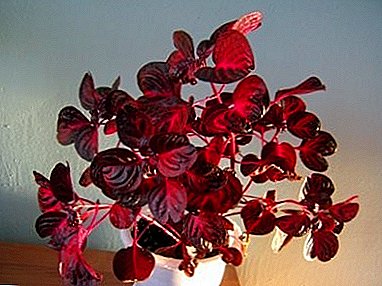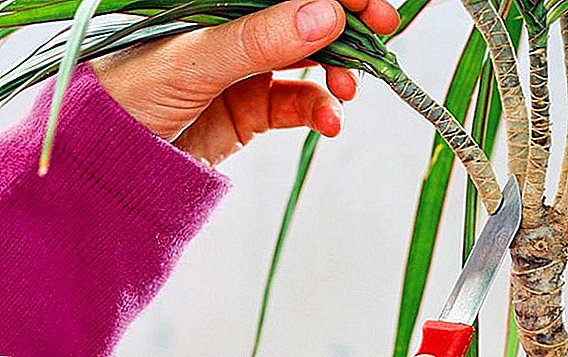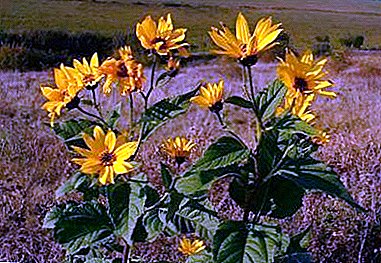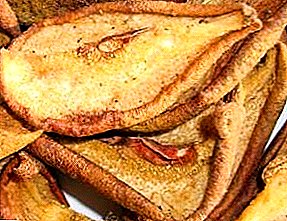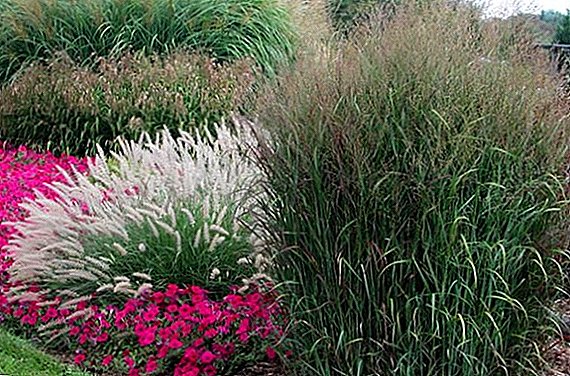 A neat, well-kept garden pleases the eye not only of its owner, but also of the guests. Previously, the main decoration of the site were flower beds. Now in vogue include compositions of ornamental cereal plants. They are less whimsical in care and create a feeling of lightness and airiness.
A neat, well-kept garden pleases the eye not only of its owner, but also of the guests. Previously, the main decoration of the site were flower beds. Now in vogue include compositions of ornamental cereal plants. They are less whimsical in care and create a feeling of lightness and airiness.
Care features
You can plant cereals at almost any time convenient for you. The main thing is that the street should not be hot or winter should not come. Planted before the winter cereals perfectly tolerate frost and with the arrival of spring will instantly turn green.
We have already said that decorative cereals do not need special care. For them, it will be enough if after the snow melts you will clean the territory: remove the dry branches, cut off the diseased and dried shoots, dried inflorescences and leaves.
For cereals is characterized by self sowing. Therefore, in the spring, inspect the site carefully and remove the excess shoots. They are practically not attacked by pests. The only enemies for them are aphids and ticks.
To cope with such a scourge, you can use simple water. Roll the affected bush with a powerful jet of water from a hose. If the pests are persistent, spray the shrubs with soap and water. 
Decorative cereals with photos and descriptions
Ornamental plants get their name from the word decorate (to give something a beautiful appearance of decoration). Indeed, with their help they decorate garden plots, park zones, any urban and rural territory, dwelling, and so on.
Penisetum bristly
This is a grass plant of the family of cereals. Perennial. It reaches a height of 1.2 meters. He comes from North Africa. Features of its appearance:
- The lower part of the branch without hairs, the top - fleecy or rough.
- Each spikelet consists of two flowers. One is well developed and bisexual, the second is less developed and has only stamens.
- On average, the length of the spikelet with a half centimeter flower. The whole spike in length - up to 15 cm.
- Stems grow straight, leaves are narrow, up to 60 centimeters long.
There are several types of this plant.
- Foxtail. It has soft fluffy inflorescences 40-100 centimeters long. The color range is from purple to red-brown. The flowering period falls at the end of summer. Perfectly transfers winter under the shelter from leaves or fir branches.
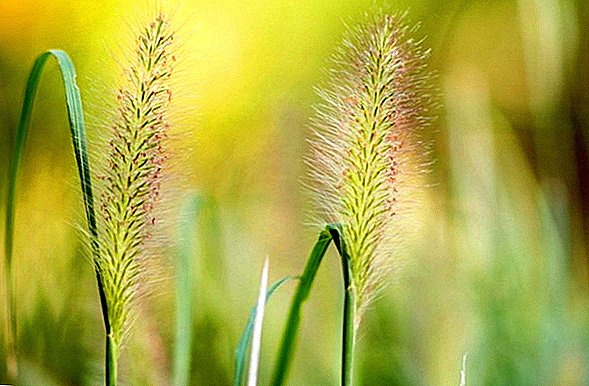
Did you know? The first mentions of the use of ornamental plants by man date back to the 6th century BC.
- Oriental. It grows well on stony soil and slopes. In height reaches 80 centimeters. Panicle thick, rough, from 4 to 15 centimeters long. The color is pink or purple. Prefers a southern climate.
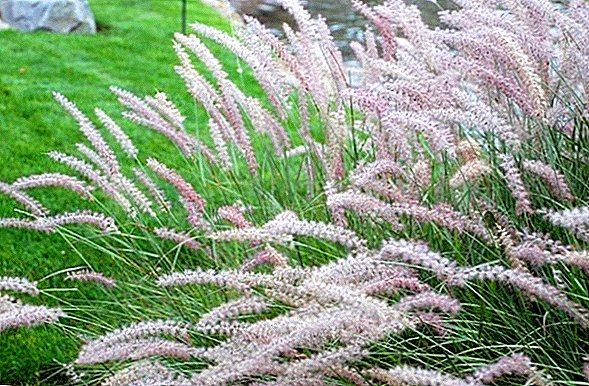
- Shaggy. Loves stony and rocky soil. Spikelets of golden color, thick. Also prefers a warm climate.
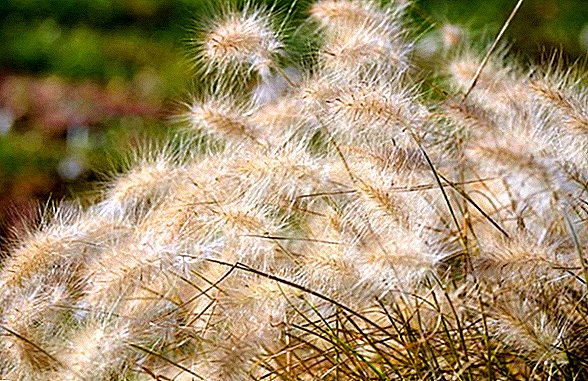
Check out the top nine best ornamental herbs for a flower bed.
- Plain. Massive plant with large leaves and spikelets. It grows up to 1.2 meters. The flowering period - from the beginning of June to the end of September. He loves the bright sun, but at the same time endures severe frosts. Unpretentious to the soil. Can grow in borders.
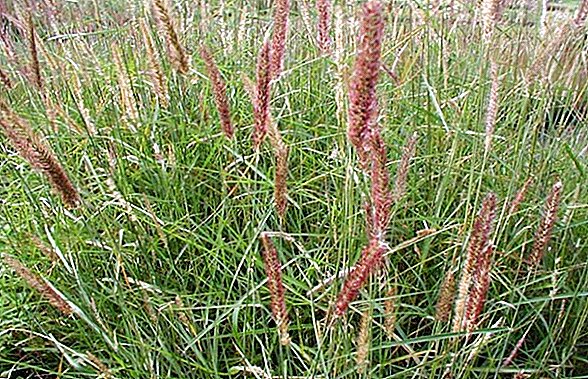
- Gray. Also a large and massive plant with burgundy wide leaves and the same spikelets. It grows to a height of two meters. It blooms from June to September.
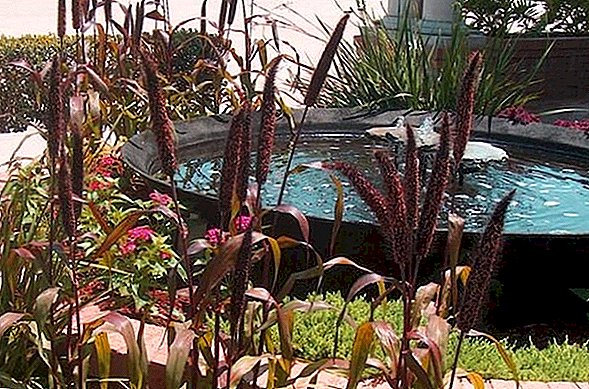
- Bristly. Another lover of stony soil and hot mild climate of subtropics. Spikelets are rare, small (up to 40 cm), pink or purple. Dried stems are often decorated with bouquet compositions.

Since the plant comes from hot countries, it needs constant access to the sun. Some gardeners have turned the plant from a perennial to an annual by growing it in pots.
This allows you to protect the cereal from gusts of cold wind and harsh winters. Pennisetum is unpretentious to the soil, but it feels most comfortable in wet, fertilized and drained soil. Requires close attention in the period of active growth and development.
It is recommended to weed regularly around the shrubs, to loosen the ground. Water, if rainfall in your area is not often, monthly fertilizer. Do not allow moisture to accumulate under the bush.
Therefore, the best planting place is along the walls of the building and in the lowlands. In the winter it is better to remove the plant in the room. If this is not possible, cover it with leaves or fir branches.  Bred from seeds. When planting a seed, it is not necessary to cover it with earth. It is enough just to press into the soil. In open ground planted in early May, when the height of the stems of the plant will be 10-15 centimeters. Seedlings are best to breed yourself, as the purchase is often poorly acclimatized..
Bred from seeds. When planting a seed, it is not necessary to cover it with earth. It is enough just to press into the soil. In open ground planted in early May, when the height of the stems of the plant will be 10-15 centimeters. Seedlings are best to breed yourself, as the purchase is often poorly acclimatized..
Did you know? Already in the middle of the 19th century, the peristhetician (pennisetum) bristled was used as an ornamental plant.
Mühlenbergia hairlike
Myulenbergia hair-like - grassy perennial plant, a native of the North American continent. In its natural habitat it grows in steppes, along roads. The grass bush grows 50-100 centimeters high and the same in diameter.
In the summer season, the shrub remains green. With the onset of autumn is painted in bronze and copper colors. Mühlenbergia owes its popularity to unusual flowers. During the flowering period, they are pale-pink, thin, elegant.  With the onset of autumn, the spikelets are transformed and turn the plant into a balloon of white or pink color. Refers to the heat-loving plants. It tolerates severe frosts, especially if the temperature drops below -18 degrees.
With the onset of autumn, the spikelets are transformed and turn the plant into a balloon of white or pink color. Refers to the heat-loving plants. It tolerates severe frosts, especially if the temperature drops below -18 degrees.
Winter thaws are also destructive for it, when there is a surplus of moisture in the earth. Because of this, the roots of the plants can bloom. Loves sunshine and spaciousness, so it feels great on the sandy slopes.
Practically does not get accustomed on boggy sites. Suitable as a hedge. Not afraid of dry periods, but if there is abundant watering, it will grow even more lush. Resistant to pests and diseases.
It grows from seeds, but the shrub of an adult plant is practiced. Sowing seeds do in March, as usual seedlings - in a glass. Possible seeding of open soil, starting in May. For the best growth cover with a film. Transplanted to the right place at the end of May, early June. 
Shaggy bristles
The Latin name of the plant - pennisetum shaggy. Herbaceous perennial herbaceous plant, released from the North African region. In our latitudes, more used as an annual plant.
In height it grows up to 30-60 centimeters. Its leaves are narrow and flat. Spikelets are usually golden in color and thick. The flowering period falls at the end of summer.
Seeds are planted in the ground in late February - early March by pressing into the ground a couple of millimeters. The sown area should be in a warm place with a temperature of 22-25 degrees. Then the first shoots will appear in three to six days.
After two or three weeks after emergence, you can dive and transplant into small pots. With the onset of cold weather, it is better to hide the plant in a room or cover it with dry leaves and fir branches.  With the help of peristoshtechinik decorate the shores of reservoirs, terraces, create a hedge or background in the background.
With the help of peristoshtechinik decorate the shores of reservoirs, terraces, create a hedge or background in the background.
For hedges well suited: yew berry, sloe, boxwood, forsythia, spruce, western thuja, juniper, hawthorn, lilac, rosehip, ryabolynistnyy ryabnichnistny, common privet, barberry, yellow acacia, pyracanthus, cotoneaster.
Miscanthus
Miscanthus (fan) is an ornamental grass from the family of cereals. Unpretentious plant growing in the subtropics and the tropics. Very high. Some bushes reach a height of two meters. Leaves are wide, tough. Spikelet is like a fan, unfolded in one direction.
The genus of miscanthus includes 16 species. Each of them has its own distinctive features.
- Giant miscanthus. Perfect as a hedge, as it reaches a height of three meters. Looks great on the banks of reservoirs. The leaves of the plant are tough and hang down the sides like willow branches. The flowering period falls on the end of summer, the beginning of autumn. If the climate is cold and the summer is very short, then flowering may not occur.
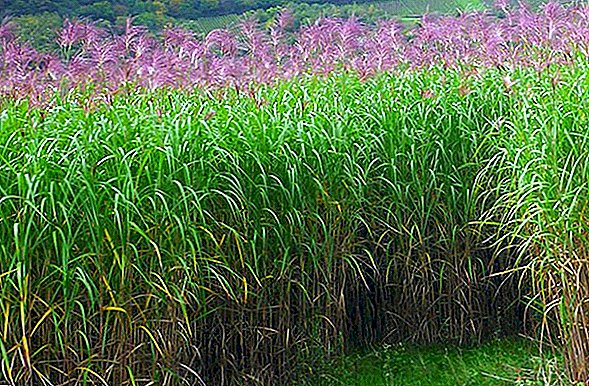
- Chinese. Another tall plant. Its homeland is China and Japan, so Chinese miscanthus prefers a warm, humid climate. The appearance of the shrub is as follows: in the center there are spikelets on the long stems, and on the sides, in the lower part, leaves grow. Spikelets grow to 30 centimeters in length. In the native climate zone, the plant blooms from late summer, autumn. Perfectly decorate the coastal area of the reservoir, grass borders, park areas.

- Sugar Blossom. In its natural habitat it grows on sandy river banks, wet lawns. In height reaches two meters. Inflorescences are rare, thin. The flowering period falls on the month of July. The decorative look pleases with color until the end of autumn.
If it is not necessary for the shrub to grow strongly, plant it in dry ground. Refers to the heat-loving plants, therefore, tolerates severe frosts poorly. With the onset of cold, miscanthus must be covered.
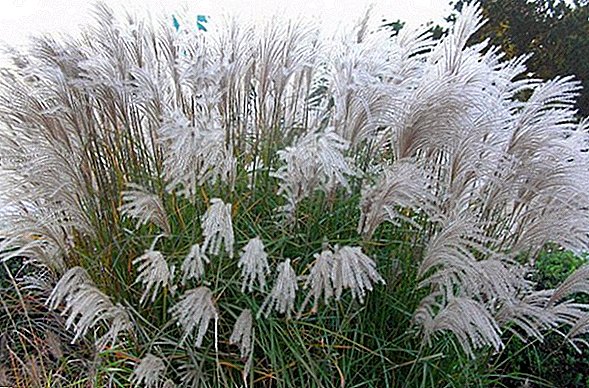
All types of miscanthus are propagated by seeds and shrubs. Unpretentious and do not like very much when they are transplanted. And this procedure should be carried out periodically, especially if the central part of the bush begins to dry out. Pruning shrubs in early spring.
Horsetailtail
Unusual cereal plant, which is a single species - horsetail egg-shaped. Most likely, it was so named because of the fact that the spikelet has an egg shape, and resembles a hare's tail from afar.
Straight stems grow up to 95 centimeters long. It grows in Mediterranean countries. Occurs in Ukraine. From the halo of habitat it is clear that the plant needs a mild climate. Frosty winters are bad.
In order to grow a tailtail on the site, it is necessary to collect seeds in the autumn. By this time, they fully ripen and dry. Planting begin in April in greenhouses or small pots. Two weeks later, you can transplant to a prepared place in the garden.  With the arrival of warm sunshine (May month), you can sow seeds in open soil. It is best to mix the seed with sand and press into the ground a couple of centimeters. The distance between the holes - 10-15 centimeters. Shoots appear 10-12 days after seeding.
With the arrival of warm sunshine (May month), you can sow seeds in open soil. It is best to mix the seed with sand and press into the ground a couple of centimeters. The distance between the holes - 10-15 centimeters. Shoots appear 10-12 days after seeding.
Haretail - unpretentious plant. Feels equally good in the open spaces and in pots on the balcony. Perfectly tolerates dry seasons, provided that abundant watering is provided.
Ovsets viviparous
A beautiful herb of the family of cereals with bluish leaves. The bush resembles a hummock of a regular hemispherical shape. The leaves are thin, long, arrow-shaped. Inflorescences are small and thin, keep on a long, up to 150 centimeters, stem.
Ideal for areas with dry, depleted soil. In shady terrain and on fertilized soil begins to actively turn green. Dislikes raw earth. If the climate is hot and humid, it blooms badly.
Recommend to plant in the spring. When the plant ottsvetet (July), spikelets need to be cut, and the next year in the spring to cut off completely the stems. He tolerates winters well, but after severe frosts loses its appeal.  It propagates both by seed and by planting a bush. Growing seedlings should be in pots. It is better to divide the shrub in early spring, so that by the fall the plant will stick in the new place and grow stronger.
It propagates both by seed and by planting a bush. Growing seedlings should be in pots. It is better to divide the shrub in early spring, so that by the fall the plant will stick in the new place and grow stronger.
Blue fescue
Blue fescue is an unusual decorative plant of pale blue color. As well as the sheep corns, it has the shape of a regular bump with a height of 35-40 centimeters. Perfectly complements the design of the plot, planted with low grass. Can be used to decorate flower beds, ponds, park areas.
Fescue does not need special care. In order for an unusual plant to please the eye with blue color, plant it in sunny places. With a lack of sun, the leaves acquire the usual green color.
Learn more about the secrets of growing fescue from seeds.The soil can be drained, but always drained. It blooms from June to late autumn. Spikelets are thin, gray-green on a long stalk.
If the plant grows on your site for three years now, it's time to start planting it. From this point on, such a procedure should be held every two years. This will keep the attractive appearance and rich color of fescue. 
Important! Does not need special preparation for winter. You can not even hide it.The plant is propagated by seed, seedling methods and by dividing the bush. Seeds are bought in stores or collected from their shrubs at the end of the flowering period. Sow the soil easily.
It is enough just to scatter the seeds on the site. They themselves catch on the ground. Also sow and seedlings in boxes. They require abundant watering and creating a greenhouse effect using a film. This applies only to seedlings in boxes.
It is placed in a warm sunny place, and after the appearance of the first shoots is transferred to a cooler one. If the young shoots have formed at least two leaves, it is possible to plant the plants in pots, and in May - in the garden.
Cortaderia
Perennial herb, whose name comes from the word cut, due to the fact that it has very thin and sharp tips of the leaves. High, up to three meters, a densely growing ornamental plant.  Foliage is concentrated at the base. Spikelets with a female flower are magnificent, with long silky hairs, lowered down. Male bald. The flowering period - August - October.
Foliage is concentrated at the base. Spikelets with a female flower are magnificent, with long silky hairs, lowered down. Male bald. The flowering period - August - October.
The plant is characterized by vegetative and seed reproduction. From seeds, seedlings are first grown. Sow them in March - April. The sowing feature is cold semen stratification. It is necessary for the seeds to ripen.
Ready seed is planted in sandy-peat soil in boxes. They are stored in a ventilated room at room temperature. The first shoots appear after two weeks.
From the second half of May, seedlings can be planted in open ground. Only adult cortaderia older than five years old are in bloom. With the onset of warm serene spring days, shrubs planted before this can be planted.
In the care of cortaderia unpretentious. Perfectly survives in the open spaces with poor soil. If there is minimal rainfall in your area, water the shrub every two weeks. Fertilize and feed the soil near the cortaderia need spring. With the arrival of autumn, in order for the plant to survive the winter better, it is recommended to tie the stalks in bunches and press them to the ground. Young shoots covered with dry leaves.
Important! When decorating the plot, land the court in heaps.
Feather beautiful
The beautiful toddle grass (Graff's toad grass) is a flowering herb of the family of cereals. It has more than three hundred species. It grows up to one meter in height and has thin, long, arrow-shaped leaves. Small spikelets with a length of no more than seven centimeters are collected in elegant panicles.
No wonder the plant got the name beautiful. During the flowering period, panicles descend a little to the ground, fluff up, and it seems that aerial feathers are scattered around the green field.
To grow extraordinary beauty of grass, you need to stock up on seeds. First, seedlings are prepared, which germinates one to two months. When the sprouts are strong, you can plant in open ground (May - June).  The best for feather grass is dry and limestone soil. If at the site groundwater passes close to the surface, it is recommended to drain the water before planting the grass grass. Water the plant only before it sprouts.
The best for feather grass is dry and limestone soil. If at the site groundwater passes close to the surface, it is recommended to drain the water before planting the grass grass. Water the plant only before it sprouts.
Did you know? Kovyl beautiful listed in the Red Book of Ukraine and Russia.Does not tolerate the accumulation of moisture in the root zone. All he needs is regular weed weeding at the site. For the winter, it is recommended to cut dry leaves and flowers.
Features create a composition of cereals
The main principle in the decoration of the garden area - properly selected plants. That is, in one place only lovers of the sun and moisture should grow, in the second - only lovers of arid stony soil, in the third - such that they do not tolerate drafts, etc.
It should also be borne in mind that every type of cereal in landscape design should be in harmony with its own kind and the rest of the plants. For example, low-growing cereals are perfectly combined with flower beds, suitable for decorating paths, to create compositions in the rocky garden.  With such a role is best cope fescue. Sow with large, open areas. Tall cereal crops will serve as a green hedge. They can divide the area into zones.
With such a role is best cope fescue. Sow with large, open areas. Tall cereal crops will serve as a green hedge. They can divide the area into zones.
Suitable as a background. Most of the representatives of this species are very fond of wet soil. Therefore, if there is a reservoir in the garden plot, feel free to plant a miscanthus around it, a shaggy or gray pennisetum.
When working on landscape design, remember that all cereals do not like to grow in crampedness. And many still grow very actively, oppressing at the same time other, weaker cultures. If the area is small, decorate it with fescue or oats. Stylish neat bushes revive your garden.
Из вышесказанного можно сделать вывод, что любой декоративный злак относится к тем видам растений, которые посадил и забыл о них.
Даже выходцы из жарких стран нормально растут в наших широтах. All that is needed for them is to cover for the winter, weed from the weeds, and in the spring to cut dead wood. 











